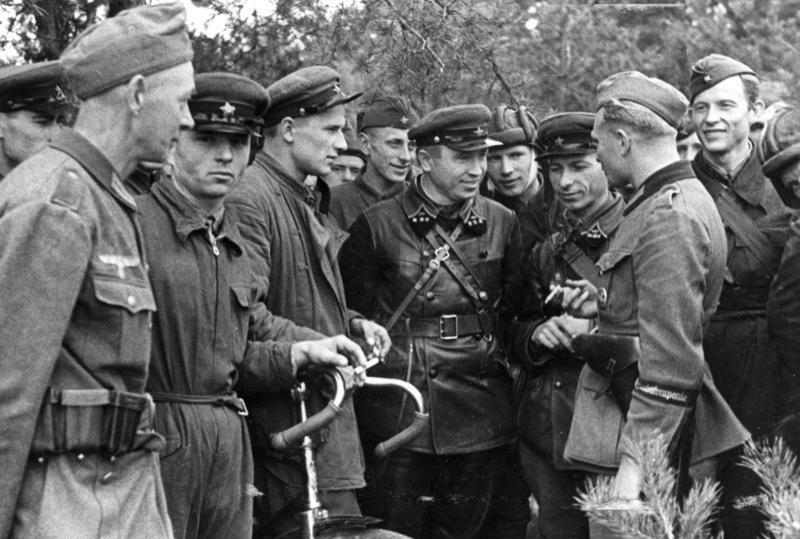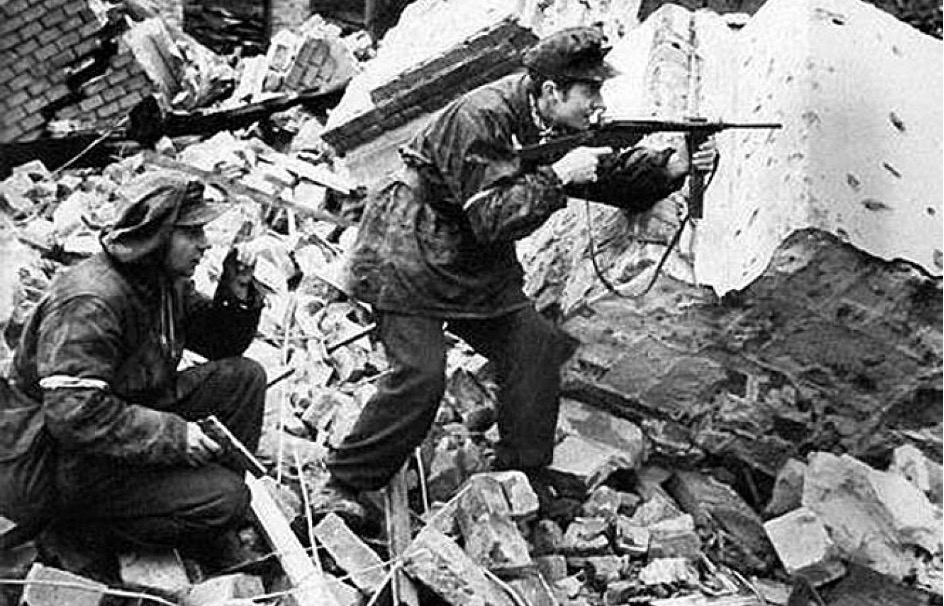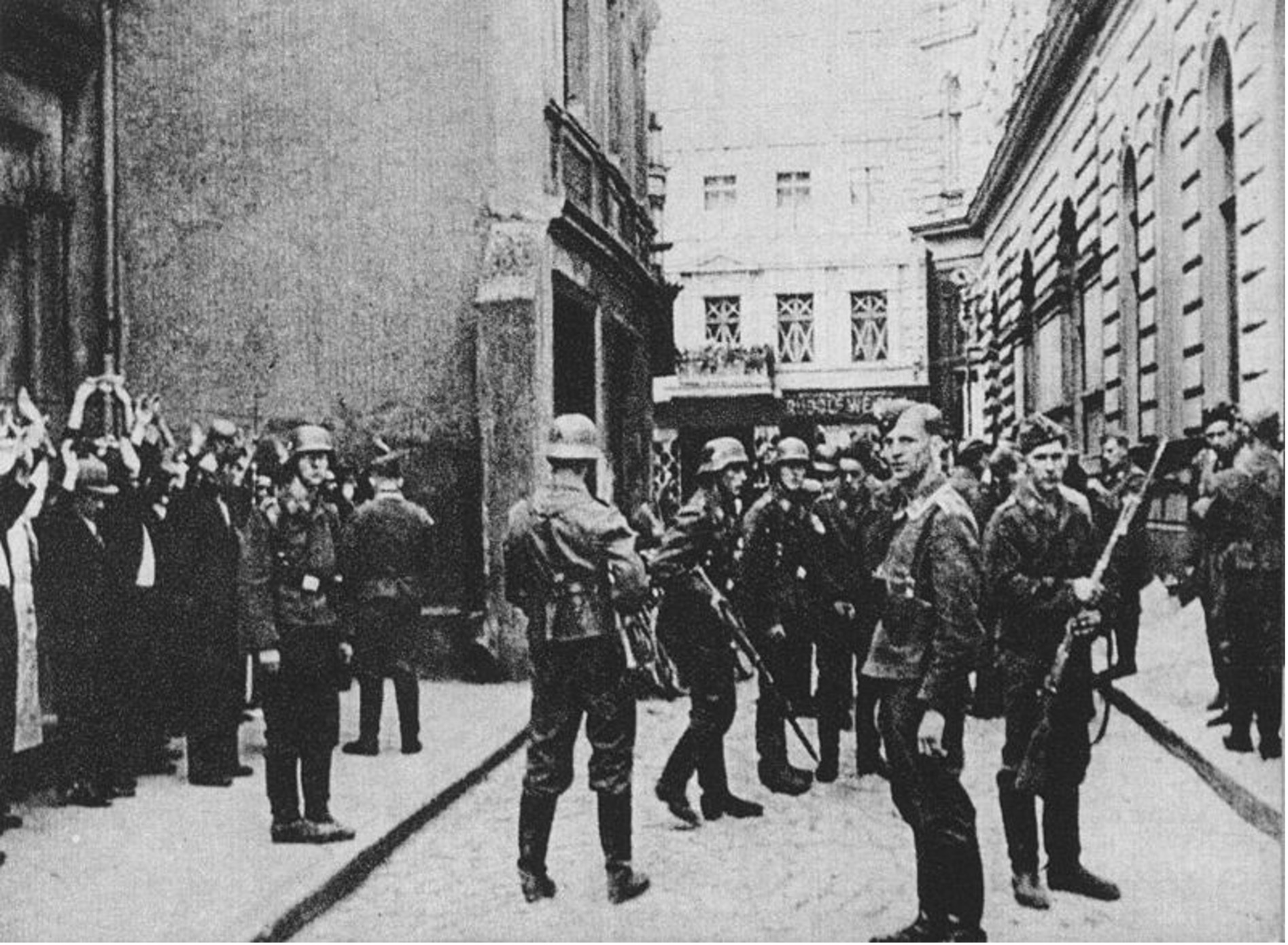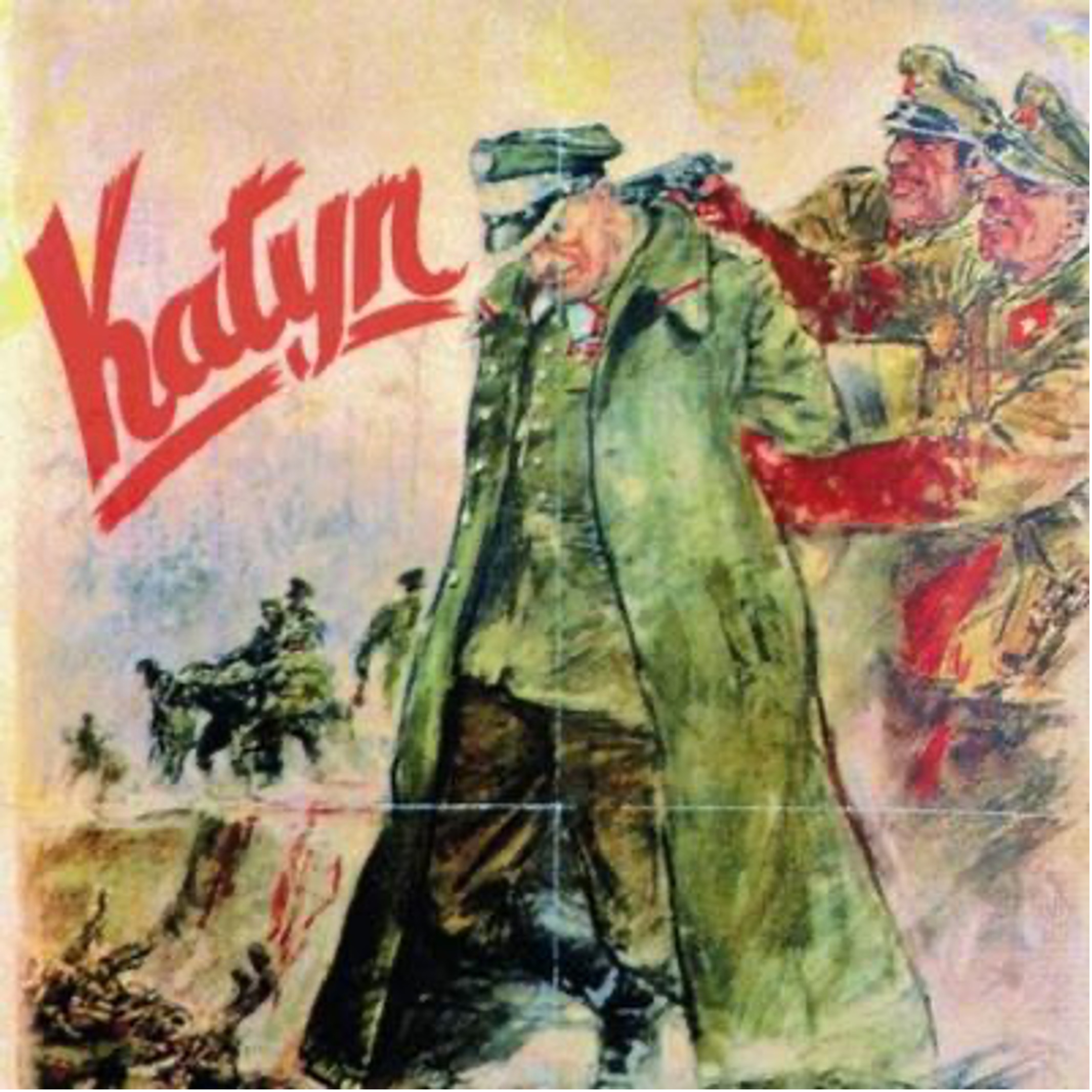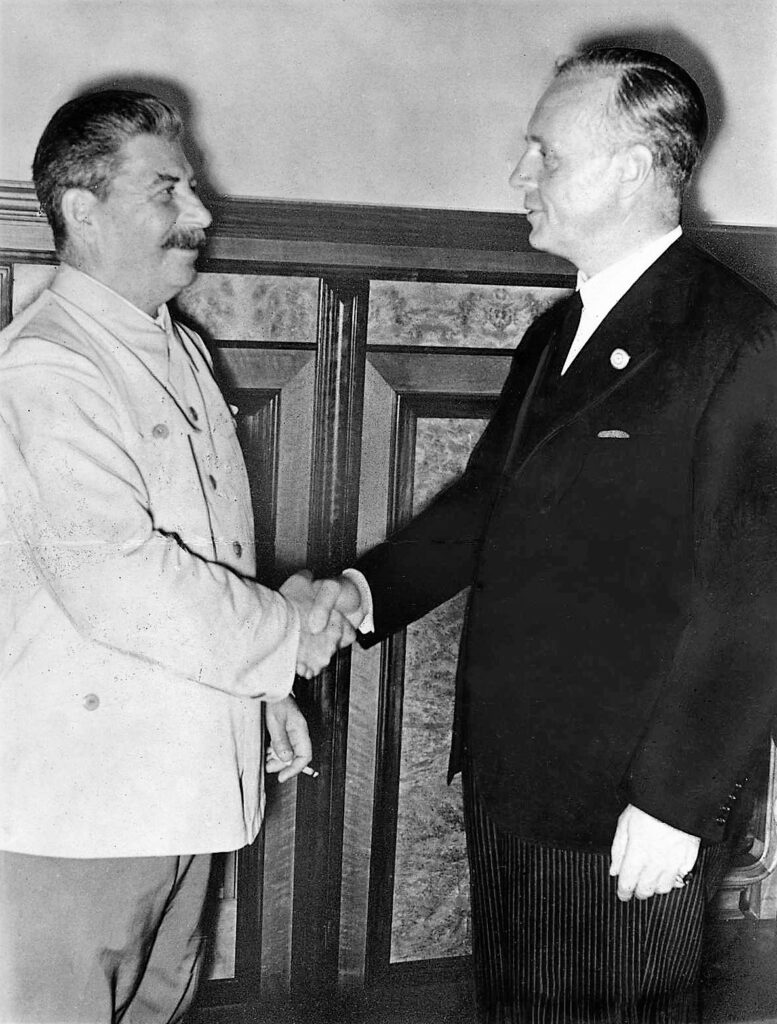
Ribbentrop-Molotov pact – Westerplatte Monument, Gdansk
Polish figure of the „The myth of national disaster” topic
The Ribbentrop-Molotov Pact is deeply entrenched in the Polish myth of national catastrophe, symbolizing the ultimate betrayal. Historically, Poland had navigated a precarious path between two powerful neighbors: Nazi Germany and the Soviet Union, taking a middle way between Berlin and Moscow as part of the „Equal Distances” Policy. The pact’s secret protocol, which proposed the division of Eastern Europe, including Poland, between the two powers, prelude its imminent destruction. Signed just a week before Germany invaded Poland on September 1, 1939, this agreement effectively sealed Poland’s fate on September 17, 1939, with subsequent Soviet invasion, marking the beginning of World War II.
The pact’s creation stemmed from mutual convenience between Hitler and Stalin. For Hitler, the treaty secured the eastern front, allowing him to invade Poland without fear of Soviet intervention during his war with Western Europe. For Stalin, it provided a time to strengthen the Soviet military, a buffer zone and an opportunity to regain territories lost during the Russian Revolution and the Treaty of Brest-Litovsk.
The consequences of the Ribbentrop-Molotov Pact were catastrophic. It not only facilitated the dismemberment of Poland but also led to the Baltic States’ annexation and parts of Romania, reshaping the European map and setting a precedent for the territorial conquests that would follow. The pact also underscored the ruthlessness of the Nazi and Soviet regimes, revealing a stark landscape where moral considerations were discarded in favor of geopolitical gains.
This dark alliance between the two totalitarian regimes—Nazism and Communism—cast a long shadow over Europe. It was a pragmatic but sinister partnership that fed the expansionist appetites of both Hitler and Stalin, leaving a trail of destruction and human suffering in its wake. The Ribbentrop-Molotov Pact not only heralded the outbreak of World War II but also symbolized the dangers of diplomatic duplicity, where secret agreements were made in the corridors. For Poland and many other nations, it remains a symbol of disaster.
Further reading:
Moorhouse, R. The devils’ alliance : Hitler’s pact with Stalin, 1939-1941. New York.
Kolasky, J. (1990). Partners in tyranny : the Nazi-Soviet Nonaggression Pact August 23, 1939. Toronto.
Courtois, S. (2022). Rozbiór Europy : pakt Hitler-Stalin. Warszawa.
Facts


